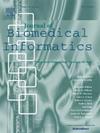Machine learning applications related to suicide in military and Veterans: A scoping literature review
IF 4.5
2区 医学
Q2 COMPUTER SCIENCE, INTERDISCIPLINARY APPLICATIONS
引用次数: 0
Abstract
Objective
Suicide remains one of the main preventable causes of death among service members and veterans. Early detection and accurate prediction are essential components of effective suicide prevention strategies. Machine learning techniques have been explored in recent years with a specific focus on the assessment and prediction of multiple suicide-related outcomes, showing promising advancements. This study aims to assess and summarize current research and provides a comprehensive review regarding the application of machine learning techniques in assessing and predicting suicidal ideation, attempts, and mortality among members of military and veteran populations.
Methods
A keyword search using PubMed, IEEE, ACM, and Google Scholar was conducted, and the PRISMA protocol was adopted for relevant study selection. Peer-reviewed original research in English targeting the assessment or prediction of suicide-related outcomes among service members and veteran populations was included. 1,110 studies were retrieved, and 32 satisfied the inclusion criteria and were included.
Results
Thirty-two articles met the inclusion criteria. Despite these studies exhibiting significant variability in sample characteristics, data modalities, specific suicide-related outcomes, and the machine learning technologies employed, they consistently identified risk factors relevant to mental health issues such as depression, post-traumatic stress disorder (PTSD), suicidal ideation, prior attempts, physical health problems, and demographic characteristics. Machine learning models applied in this area have demonstrated reasonable predictive accuracy and have verified, on a large scale, risk factors previously detected by more manual analytic methods. Additional research gaps still exist. First, many studies have overlooked metrics that distinguish between false positives and negatives, such as positive predictive value and negative predictive value, which are crucial in the context of suicide prevention policies. Second, more dedicated approaches to handling survival and longitudinal data should be explored. Lastly, most studies focused on machine learning methods, with limited discussion of their connection to clinical rationales.
Conclusion
In sum, machine learning analyses have identified risk factors associated with suicide in military populations, which span a wide range of psychological, biological, and sociocultural factors, highlighting the complexities involved in assessing suicide risk among service members and veterans. Some differences were noted between males and females. The diversity of these factors also demonstrates that effective prevention strategies must be comprehensive and flexible.

与军队和退伍军人自杀相关的机器学习应用:范围文献综述。
目的:自杀仍然是军人和退伍军人中可预防的主要死亡原因之一。早期发现和准确预测是有效预防自杀策略的重要组成部分。近年来,人们对机器学习技术进行了探索,特别关注多种自杀相关结果的评估和预测,并显示出有希望的进展。本研究旨在评估和总结当前的研究,并就机器学习技术在评估和预测军人和退伍军人自杀意念、企图和死亡率方面的应用进行全面回顾。方法:检索PubMed、IEEE、ACM、谷歌Scholar等关键词,采用PRISMA协议进行相关研究选择。以评估或预测服务人员和退伍军人自杀相关结果为目标的英文同行评议的原始研究被纳入其中。检索到1110项研究,其中32项符合纳入标准并被纳入。结果:32篇文章符合纳入标准。尽管这些研究在样本特征、数据模式、特定的自杀相关结果和所采用的机器学习技术方面表现出显著的差异,但它们一致地确定了与心理健康问题相关的风险因素,如抑郁症、创伤后应激障碍(PTSD)、自杀意念、先前尝试、身体健康问题和人口统计学特征。在这一领域应用的机器学习模型已经证明了合理的预测准确性,并且已经大规模地验证了以前通过更多人工分析方法检测到的风险因素。更多的研究空白仍然存在。首先,许多研究忽略了区分假阳性和阴性的指标,例如阳性预测值和阴性预测值,这在自杀预防政策的背景下至关重要。其次,应该探索更专门的方法来处理生存和纵向数据。最后,大多数研究集中在机器学习方法上,很少讨论它们与临床原理的联系。总之,机器学习分析已经确定了与军人自杀相关的风险因素,这些因素涵盖了广泛的心理、生物和社会文化因素,突出了评估军人和退伍军人自杀风险所涉及的复杂性。男性和女性之间存在一些差异。这些因素的多样性也表明,有效的预防战略必须是全面和灵活的。
本文章由计算机程序翻译,如有差异,请以英文原文为准。
求助全文
约1分钟内获得全文
求助全文
来源期刊

Journal of Biomedical Informatics
医学-计算机:跨学科应用
CiteScore
8.90
自引率
6.70%
发文量
243
审稿时长
32 days
期刊介绍:
The Journal of Biomedical Informatics reflects a commitment to high-quality original research papers, reviews, and commentaries in the area of biomedical informatics methodology. Although we publish articles motivated by applications in the biomedical sciences (for example, clinical medicine, health care, population health, and translational bioinformatics), the journal emphasizes reports of new methodologies and techniques that have general applicability and that form the basis for the evolving science of biomedical informatics. Articles on medical devices; evaluations of implemented systems (including clinical trials of information technologies); or papers that provide insight into a biological process, a specific disease, or treatment options would generally be more suitable for publication in other venues. Papers on applications of signal processing and image analysis are often more suitable for biomedical engineering journals or other informatics journals, although we do publish papers that emphasize the information management and knowledge representation/modeling issues that arise in the storage and use of biological signals and images. System descriptions are welcome if they illustrate and substantiate the underlying methodology that is the principal focus of the report and an effort is made to address the generalizability and/or range of application of that methodology. Note also that, given the international nature of JBI, papers that deal with specific languages other than English, or with country-specific health systems or approaches, are acceptable for JBI only if they offer generalizable lessons that are relevant to the broad JBI readership, regardless of their country, language, culture, or health system.
 求助内容:
求助内容: 应助结果提醒方式:
应助结果提醒方式:


